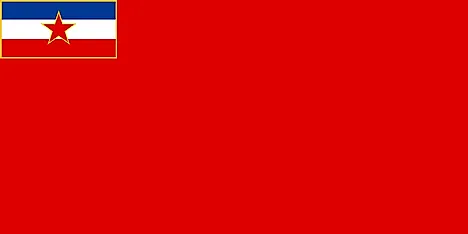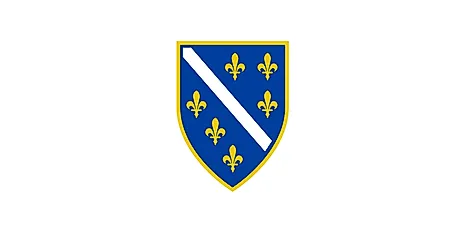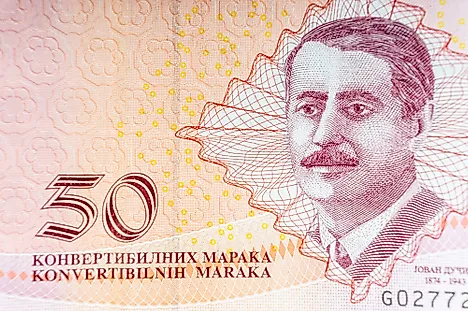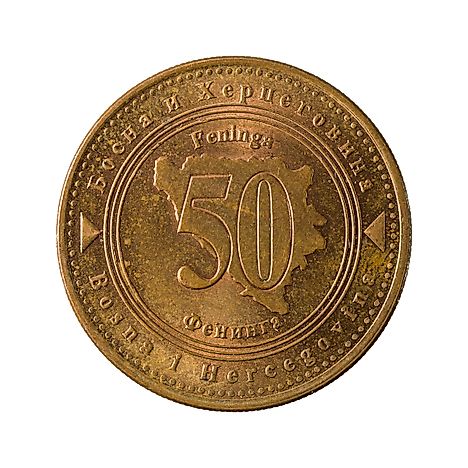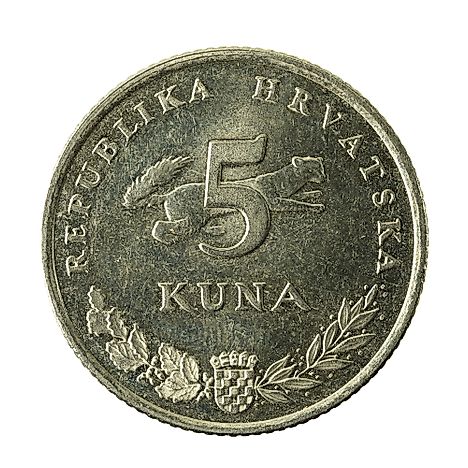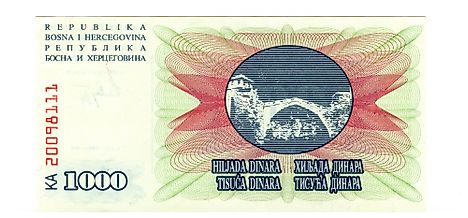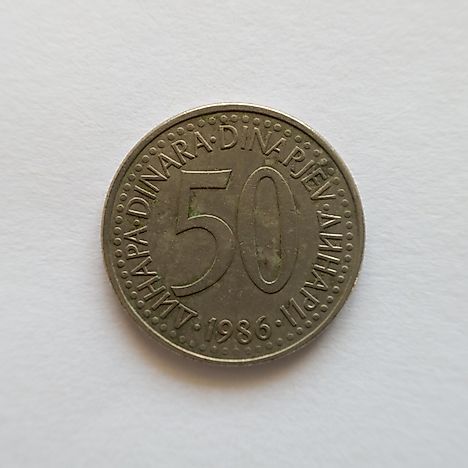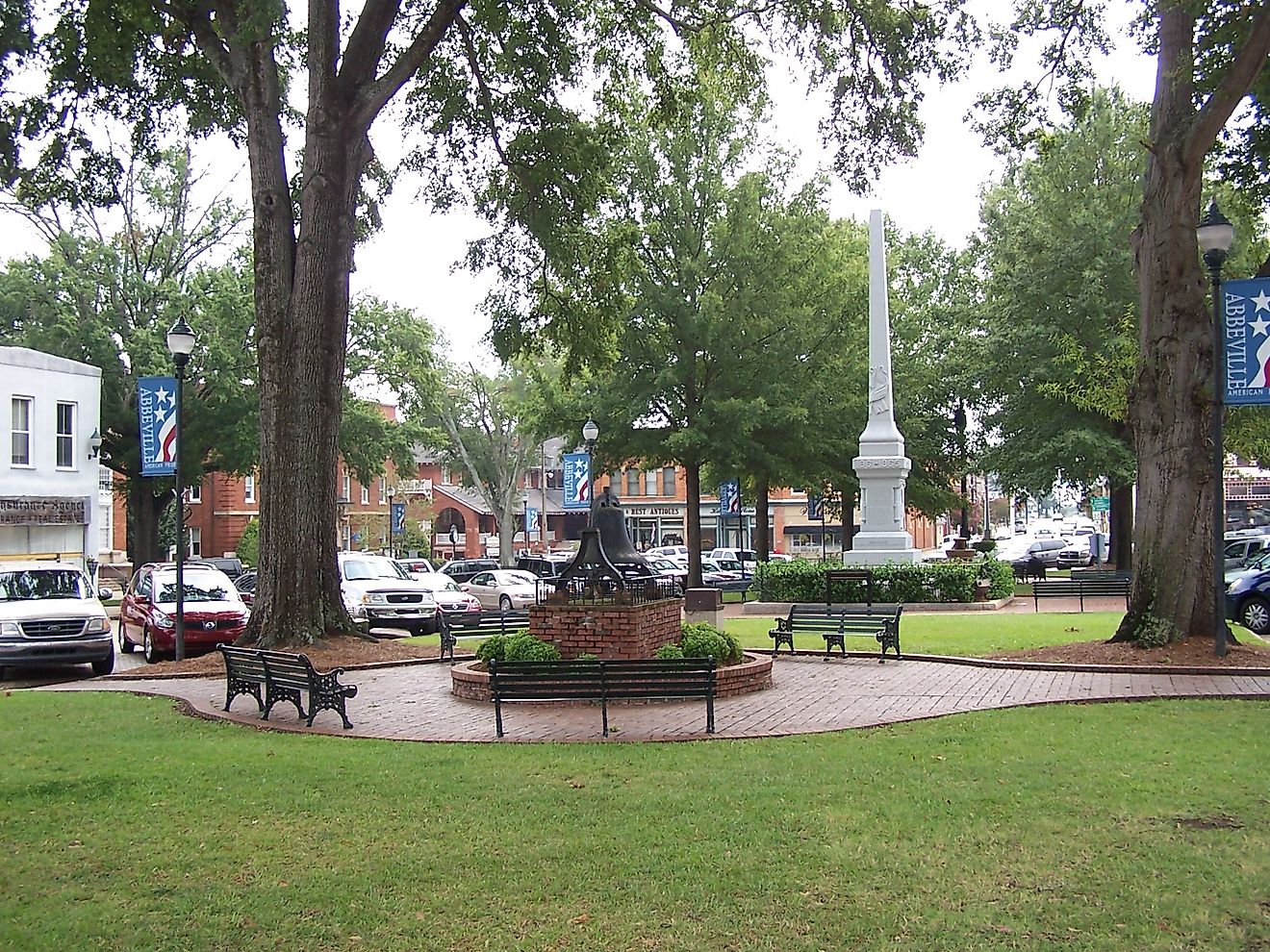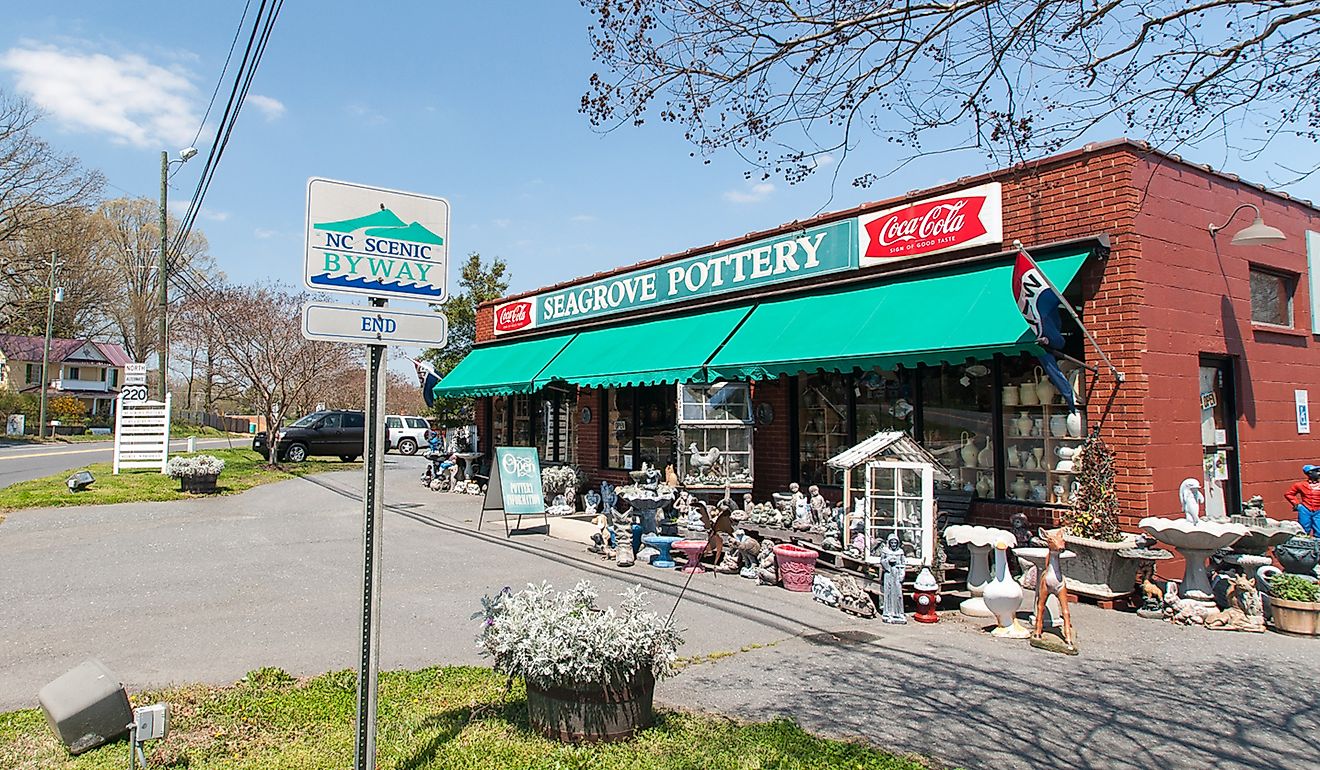Flags, Symbols & Currency of Bosnia and Herzegovina
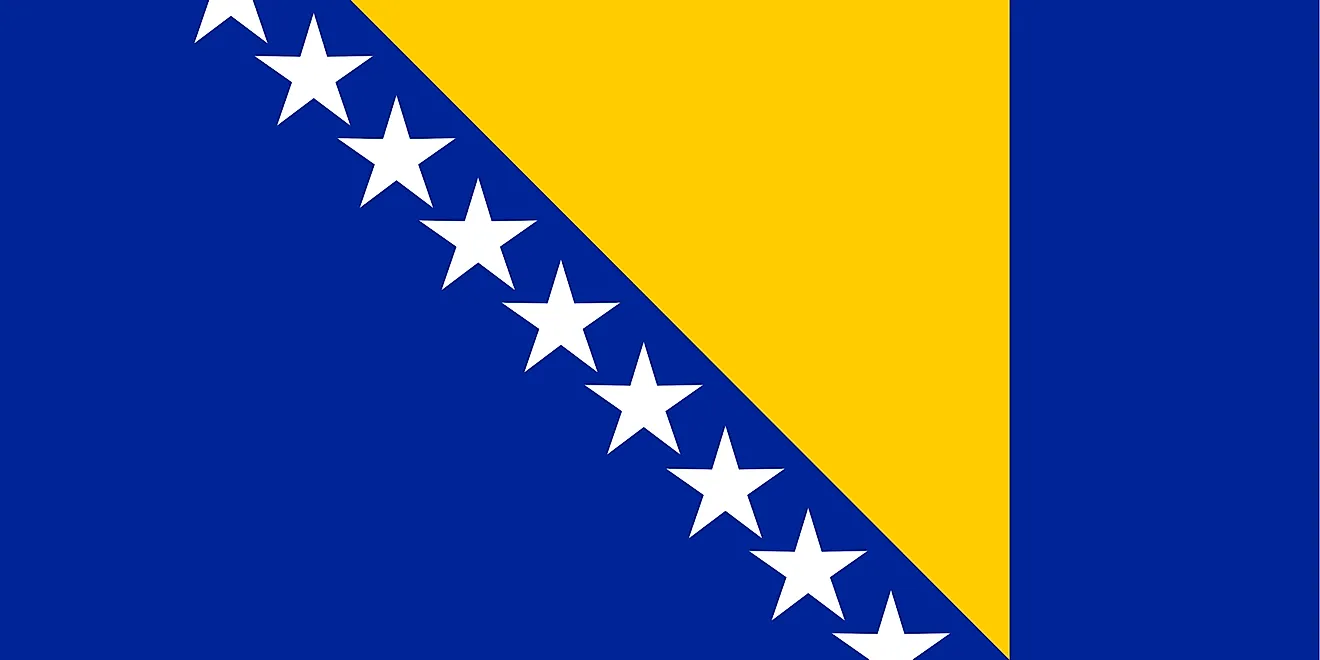
The Bosnia and Herzegovina National Flag was officially adopted on February 4, 1998. The National Flag was designed by Mladen Kolobarić and was introduced by the UN High Representative.
The flag features a wide blue vertical band on the fly side with a yellow isosceles triangle abutting the band and the top of the flag. The remainder of the flag is medium blue with seven full five-pointed white stars and two half stars top and bottom along the hypotenuse of the triangle. The triangle approximates the shape of the country and its three points stand for the constituent peoples - Bosniaks, Croats, and Serbs. The stars represent Europe and are meant to be continuous (thus the half stars at top and bottom). The colors (white, blue, and yellow) are often associated with neutrality and peace and are traditionally linked with Bosnia’s history and culture. The blue and white colors are from the Pan-Slavic Tricolore and the blue background of the flag evocated the European flag. The height to length proportions of the flag is 1:2.
History of the Bosnia and Herzegovina Flag
There have been several flags throughout Bosnia and Herzegovina’s history. In the past, the flag of medieval Bosnia (from 1377 -1463), was based on the coat of arms of the Bosnian Krotomanic Dynasty. In 1760, the green Western Herzegovina flag with the white crescent and star pointed to the left, was used by Bosniak landlords. It was also the most commonly used flag during the war. During the Bosnian Revolt of 1830, a green flag with a yellow crescent and star was used. This flag was used by Bosnian Vilayet in 1867-1908 and represented the nation during its brief independence in 1878. The flag was changed when Bosnia and Herzegovina were annexed by the Austro-Hungarian Empire. The Bosnia province used the colors red and yellow placed horizontally, but Herzegovina province used the same flag with the same colors placed in reverse order. After WWII, the red star flag of Democratic Federal Yugoslavia became the official flag. Under communist-led Yugoslavia, the Socialist Republic of Bosnia and Herzegovina used a red banner with a small version of the Yugoslav National Flag in the canton. Bosnia and Herzegovina gained independence from Yugoslavia on April 6, 1992, and adopted a new flag. Post-1998, after signing the Dayton Accords, the current flag was introduced.
Symbols of Bosnia and Herzegovina
National Coat of Arms of Bosnia and Herzegovina

Bosnia and Herzegovina's coat of arms was adopted on May 18, 1998. Its design mirrors that of the national flag with the three-pointed shield symbolizing each of the three major ethnic groups of the country, as well as alluding to the country’s shape. The prominent gold shield is taken from the arms of King Stephen Tvrtho, 1376-1391. In the upper right corner of the shield is a yellow triangle and parallelly to the left side of the triangle, there is a row of white five-pointed stars. The stars were adopted to replace the medieval Fleur-de-lys.
National Anthem
- Anthem Title: “Državna himna Bosnei Hercegovine” (The National Anthem of Bosnia and Herzegovina)
- Music Composer: Dušan Šestić
- Lyricist: - None
- Date of Adoption: June 25, 1999 (de facto)
“Državna himna Bosnei Hercegovine” is the national anthem of Bosnia and Herzegovina. It is one of the four national anthems in the world to have no official lyrics. The anthem was officially adopted on June 25, 1999, by the promulgation of the Law on the National Anthem of Bosnia and Herzegovina. It replaced the previous anthem Jedna si jedina.
The Currency of Bosnia and Herzegovina is the Bosnia and Herzegovina convertible mark (BAM)
Bosnia and Herzegovina convertible mark (BAM) is the official currency of Bosnia and Herzegovina. It was established by the 1995 Dayton Agreement. The BAM was pegged to the German Mark at par and divided into 100 pfennigs.
Coins
Although introduced in 1995, the BAM currency began circulating in 1998. The BAM coins circulate in higher denominations (mark) and lower denominations (pfennigs). The lower denominations are the 10-, 20-, and 50-pfennigs while the higher denominations are the 1 mark, 2-, and 5-marks. The coins were designed by Kenan Zekic of Bosnia and minted by the Royal Mint.
Banknotes
BAM notes of 50-pfennigs and the 1-mark, 5-, 10-, 20-, 50-, and 100-marks were introduced in 1998. In 2002, the 200-mark note was introduced while the 50-pfennigs, 1- and 5-mark notes were withdrawn. Distinct notes are issued for the Republika Srpska and the Federation of Bosnia and Herzegovina except the 200-mark note. The BAM banknotes lack consistency in their physical appearance and are thought to possess the largest number of inconsistencies of the global banknotes.
Historical Currencies Of Bosnia and Herzegovina
The state of Bosnia and Herzegovina was a part of Yugoslavia until 1992 when it was declared independent. The Dayton Agreement that sealed peace and coexistence of the three main ethnic groups (the Bosniaks, the Croats, and the Serbs) in the country also abolished the use of the Croatian Kuna, Bosnia and Herzegovina dinar, and the Republika Srpska dinar in the country by establishing the Bosnia and Herzegovina convertible mark (BAM) - the current official currency.
